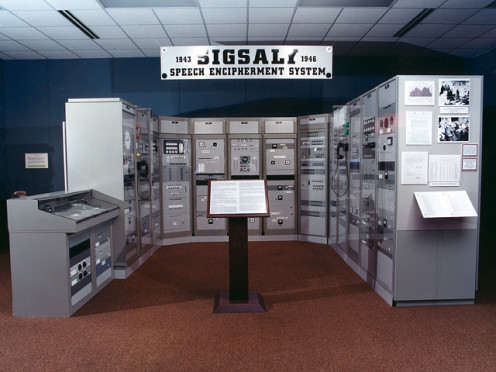- HubPages»
- Travel and Places»
- Visiting Europe»
- United Kingdom
Visiting Selfridges, London, England: Beaux-Arts, Pillared Splendour With Art Nouveau Features, Dating From 1909





A London visitor attraction in itself, historically important in World War Two
(This short hub article is limited to some historical and architectural aspects of this building in London, England. For any aspect of the services of this fine department store, contact should be made directly with its management.)
At 400 Oxford Street, London, England is Selfridges, often regarded as being among the world's finest department stores.
Dating from 1909, the building was designed by Daniel Burnham (1846-1912)(1). Other architects also assisted in the complex. Features include a highly conspicuous pillared frontage. Its style is Neoclassicism and Beaux-Arts. The night illumination of its frontage — particularly in conjunction with the Christmas lights on Oxford Street — is famous. The building is historically significant in having employed a steel frame cage construction method, which had already been widely used in Chicago, Illinois.
Another well-known feature at Selfridges, dating from 1928, is a large ornamental clock, executed in polychrome, in Art Nouveau style, by Gilbert Bayes (1872-1953) (2). As an accomplished sculptor, Gilbert Bayes gave this example of his work an allegorical name: the Queen of Time, represented by an angelic-seeming figure; and it is interesting that the statuesque embellishments are larger than the two clock-faces themselves.
There is a sense in which Selfridges constitutes one of London's major visitor attractions, even if the visitors in question might not regard themselves initially as shoppers.
During World War Two, 60 metres below ground, a SIGSALY cryptographic secure speech system was installed in the basement of Selfridges, with extensions to the American Embassy in Grosvenor Square, the British Prime Minister's office at 10 Downing Street and the Cabinet War Rooms. Thus this pioneering technology was used for highly confidential discussions between President Franklin D. Roosevelt, Prime Minister Winston S. Churchill and General Dwight D. Eisenhower in the direction of World War Two. (See photo, below, of a SIGSALY machine on display at the National Cryptologic Museum, Annapolis Junction, Maryland.)
Another use for Selfridges' basement in World War Two was as an air raid shelter; and Selfridges' employees also served as look-outs for incendiary bombs when air raids were prevalent.
I have also supplied (above) a photo of a Selfridges sale of blackout material during World War Two.
Selfridges was the brainchild of the American Harry Gordon Selfridge (1858-1947), naturalized British. He was known for the saying: 'The customer is always right'.
March 24, 2020
Notes
(1) Other works of Architect Burnham include New York City's Flatiron Building, the Ellicott Square Building in Buffalo, New York; he was particularly active in urban projects in Chicago, Illinois. He was a published writer on urban planning; and served in the architectural firm of Burnham and Root, which he co-founded, and subsequently in D. H. Burnham and Co.
(2) Interestingly, the sculptor of Selfridges' Queen of Time clock, Gilbert Bayes, specialized in war memorials also. Perhaps significantly, one of his famous sculptures — ostensibly a war memorial — is 'Destiny', unveiled at Ramsgate, Kent, in 1920; editors at the War Memorial Trust write: 'When the memorial was unveiled in 1920 it was to commemorate all those who had contributed to the First World War (rather than only remembering those who had died).. this memorial reminds us that wider contributions to the war effort can and should also be remembered.' http://www.learnaboutwarmemorials.org/download/pub/3357.9/ ; see also: https://www.iwm.org.uk/memorials/item/memorial/1979 While the Queen of Time clock is pre-World War Two, there is a sense in which the above comment on some of Gilbert Bayes's other work could also be applied to the significant role in World War Two which the premises of Selfridges would play, as part of a wider contribution to the war effort. Gilbert Boyes also served as President of the Royal British Society of Sculptors.
Some sourcing: Wikipedia



Also worth seeing
London has such huge numbers of visitor attractions that I will refer to only a small fraction of the principal ones; these include: Trafalgar Square; the Houses of Parliament at the Palace of Westminster; Westminster Abbey; St. Paul's Cathedral; the Royal Albert Hall; and many others.
...
How to get there
United Airlines flies from New York Newark Airport to London Heathrow Airport, where car rental is available. Underground and train services link Heathrow Airport with Central London. 400 Oxford Street is closest to Bond Street Underground Station on the Central and Jubilee Lines. Please note that some facilities may be withdrawn, without notice. You are advised to check with the airline or your travel agent for up to date information.
MJFenn is an independent travel writer based in Ontario, Canada

Also worth seeing
- Visiting the American (Whitefield Memorial) Church, London, England: History at 79A Tottenham Court
The American (Whitefield Memorial) Church in London, England recalls the Anglo-American ministry of the 18th century Methodist preacher George Whitefield; together with the US Embassy in London, it sponsors the annual American Thanksgiving Day Servic - Visiting Canada House, London, England: Splendid, Canadian Hub on Historic Trafalgar Square
This Greek Revival building by Sir Robert Smirke, facing London's famous Trafalgar Square, dates from the early 19th century, but for many decades has had a remarkable historic association with Canada








